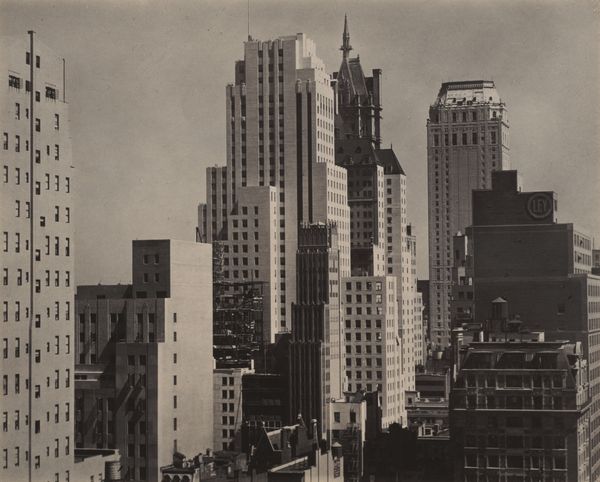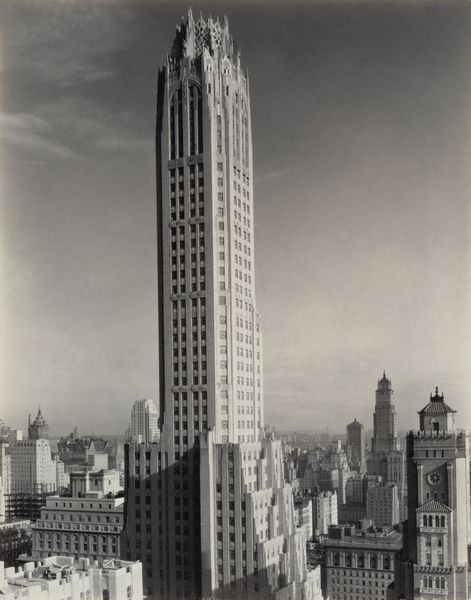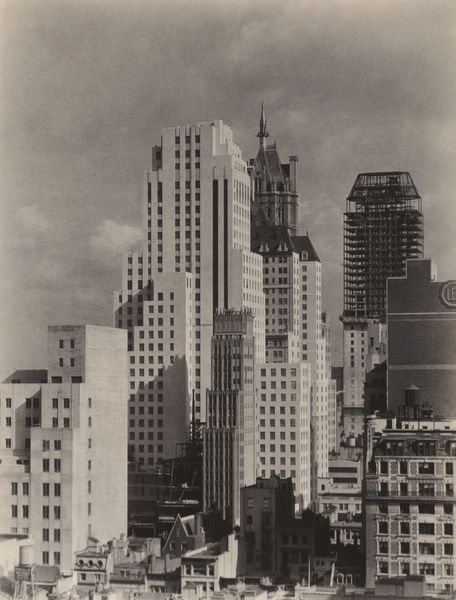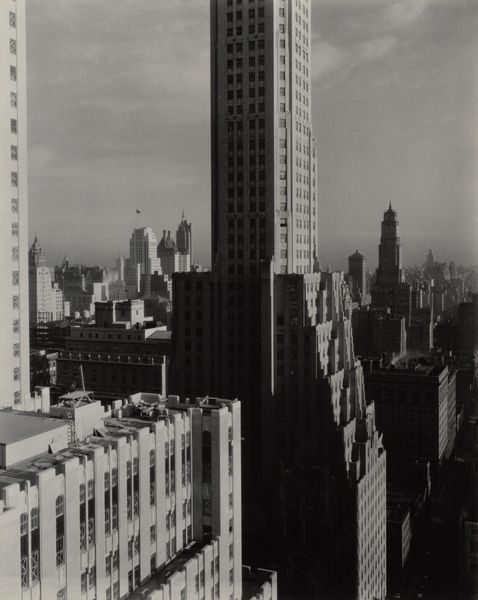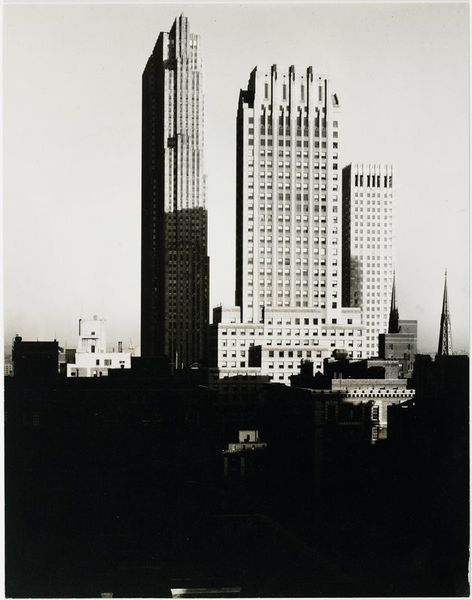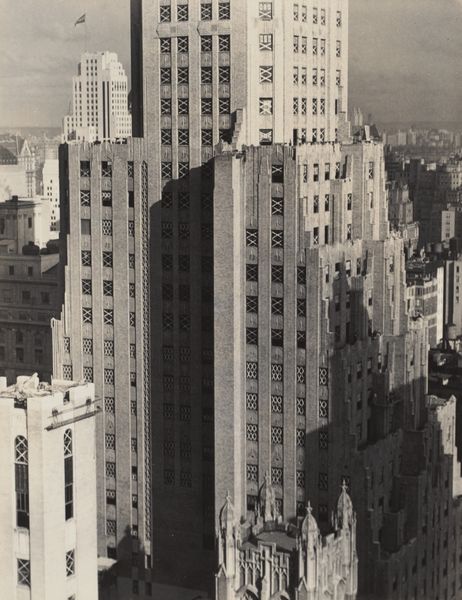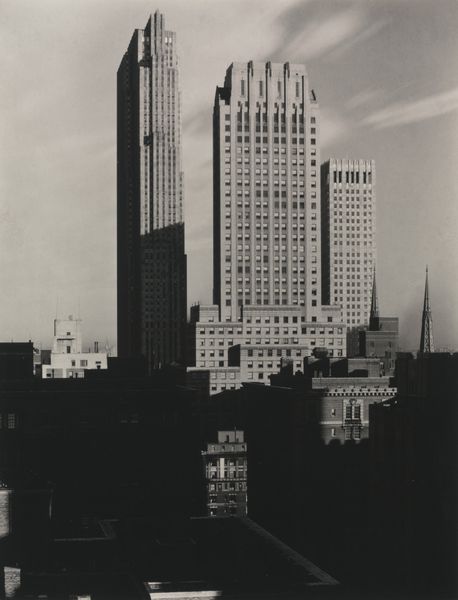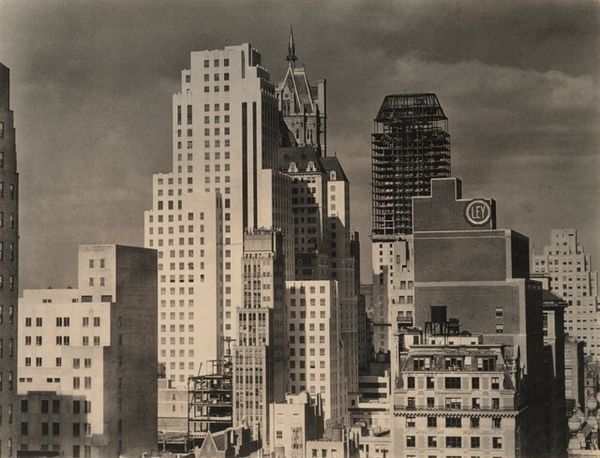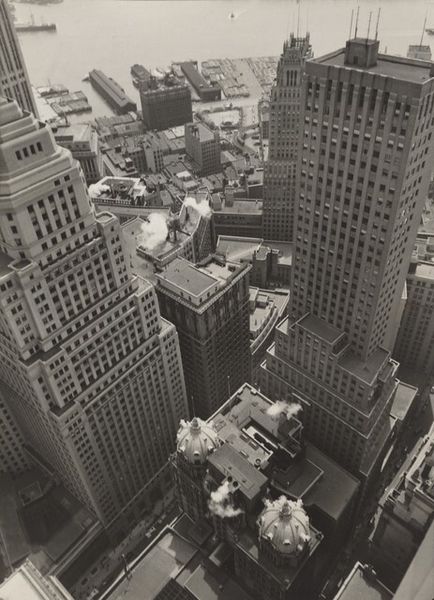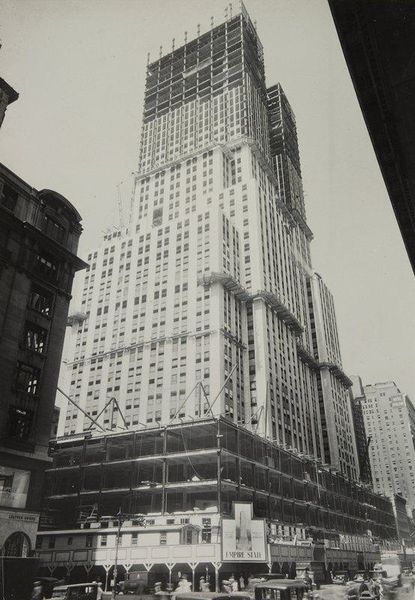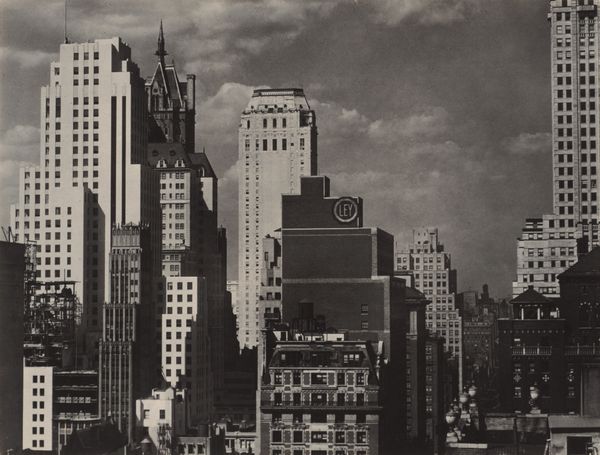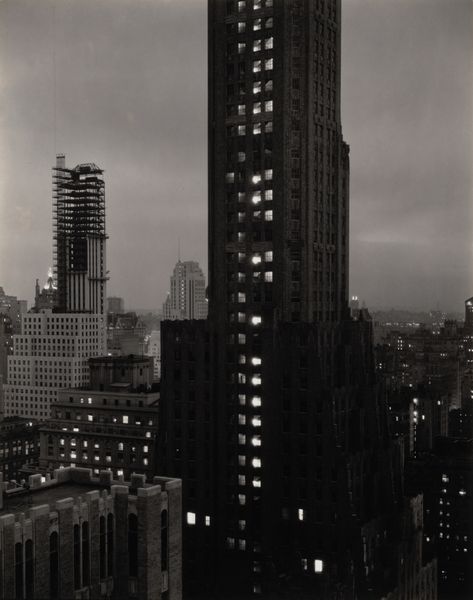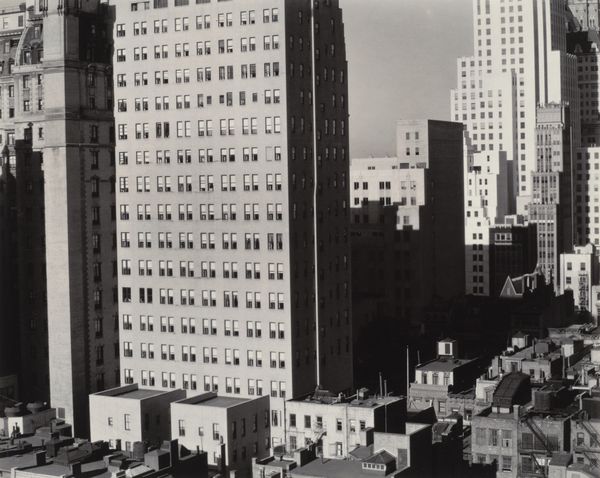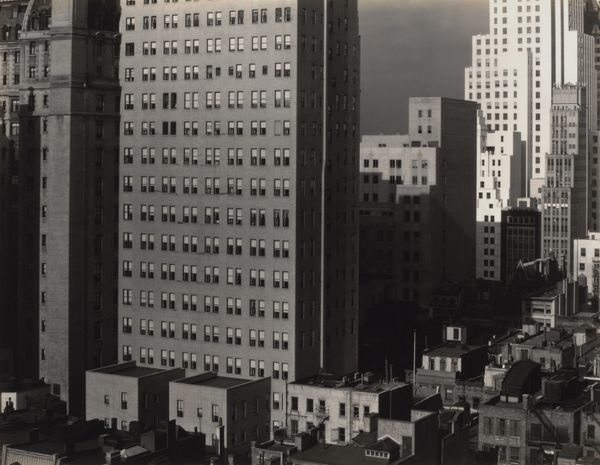
St. Bartholomew's Church, Waldorf-Astoria Hotel, and General Electric Building 2 - 1936
0:00
0:00
photography
#
precisionism
#
black and white photography
#
photography
#
monochrome photography
#
street photography
#
cityscape
#
statue
#
monochrome
Dimensions: image/sheet: 23.8 × 19.1 cm (9 3/8 × 7 1/2 in.) mount: 43 × 35.5 cm (16 15/16 × 14 in.)
Copyright: National Gallery of Art: CC0 1.0
Curator: Berenice Abbott's black and white photograph, "St. Bartholomew's Church, Waldorf-Astoria Hotel, and General Electric Building," created in February 1936, offers a fascinating juxtaposition of old and new architectural styles in New York City. Editor: Wow, my first thought? It's kind of oppressive, in a beautiful way. Like these stone giants are looming, but the light softens the edge a bit. Does that make sense? Curator: It does. Abbott’s sharp focus emphasizes the scale and texture of these buildings, capturing the tension between the spiritual, represented by the church, and the capitalist, represented by the hotel and General Electric building. The Great Depression was in full swing at this time. These imposing skyscrapers embody power and progress but also social disparity. Editor: Yeah, I feel that disparity, staring right up. It's not just physical, is it? I'm thinking about power dynamics here. It looks like even God needs some corporate scaffolding in this city. Curator: Precisely. Abbott was deeply interested in the urban landscape and social dynamics. The architectural forms are stand-ins for social commentary. Notice the choice of perspective—a deliberate positioning to spark that dialogue between these institutions and question their relationship. The church looks almost quaint compared to the looming skyscrapers. Editor: Right, quaint! Like a little mushroom under the shade of giants. There's almost a cheeky irony to it, wouldn't you say? She is highlighting that asymmetry so intentionally, it's practically begging for interpretation. What do you make of the sky and light in the image? Curator: The almost ethereal sky serves as a stark background. The contrasting dark tones of the structures amplify their impact. She aimed to use the precisionist style to document New York's changing urban environment, using architecture as a proxy for social changes during this period. Editor: I guess looking at it all, the beauty of the geometric forms and gradations really makes it easier to ponder the serious underlying themes. Thanks to Abbot for inviting me on the path, I almost feel like a little building myself. Curator: That's well put. Abbott's work remains relevant precisely because she documented more than just buildings; she captured a particular historical moment and the socio-political forces shaping it.
Comments
No comments
Be the first to comment and join the conversation on the ultimate creative platform.
